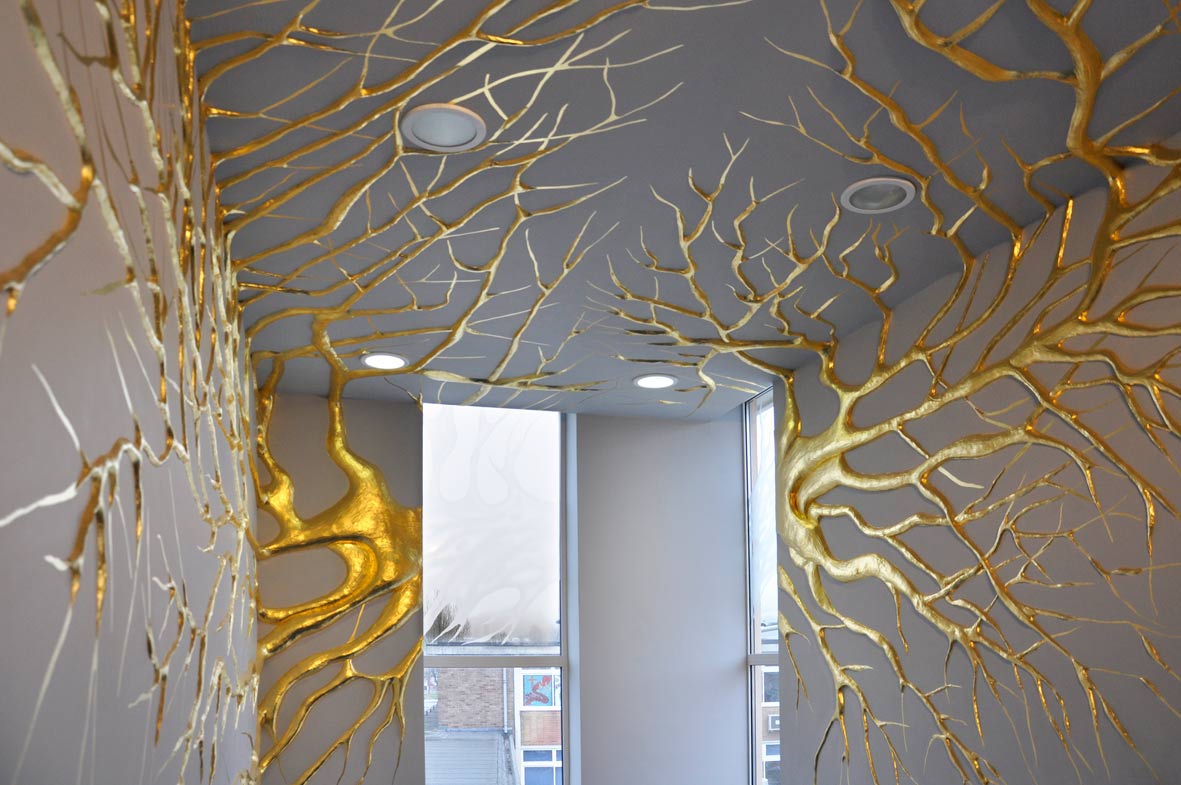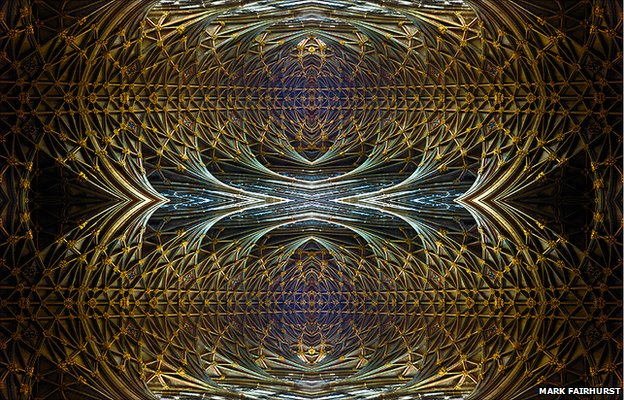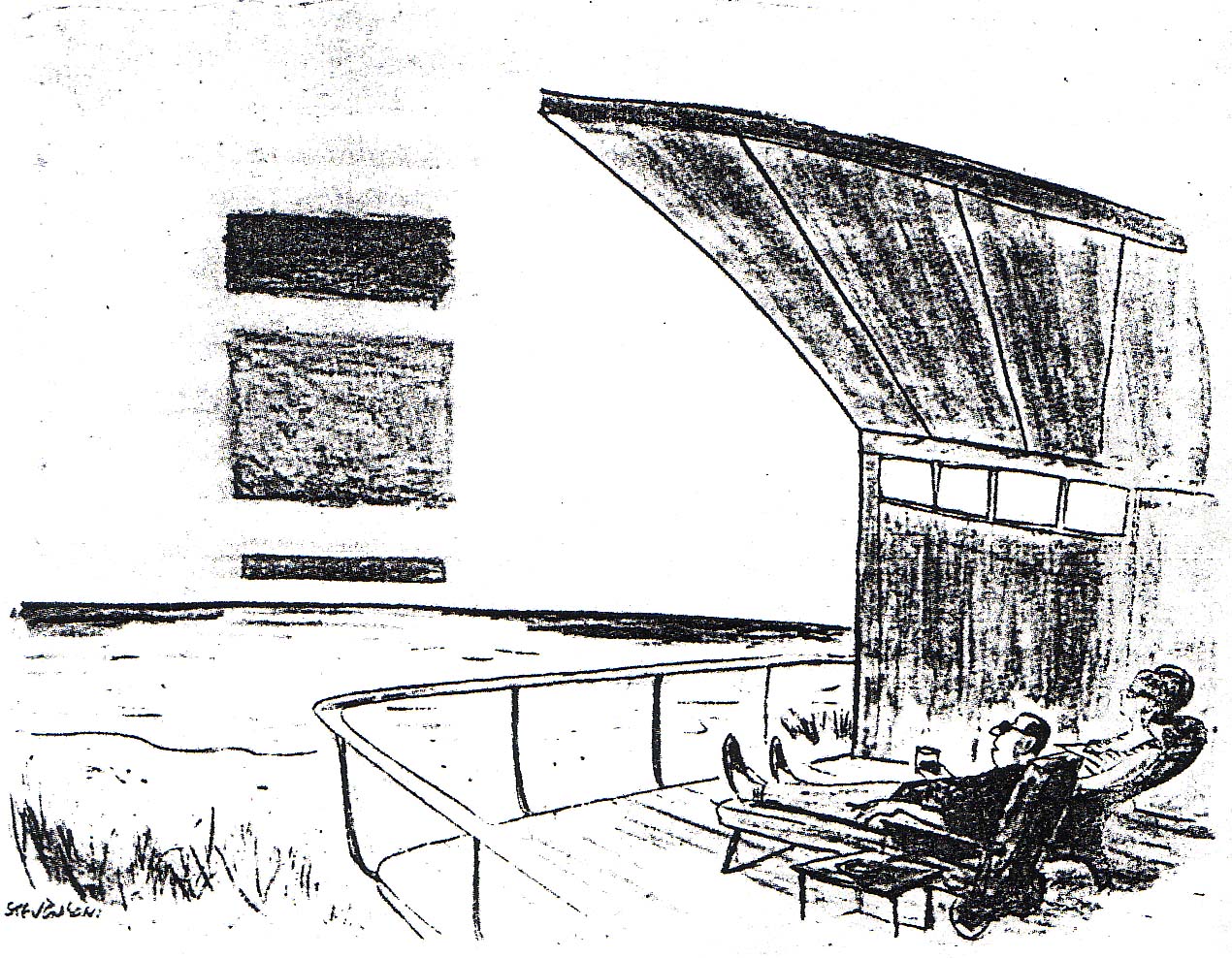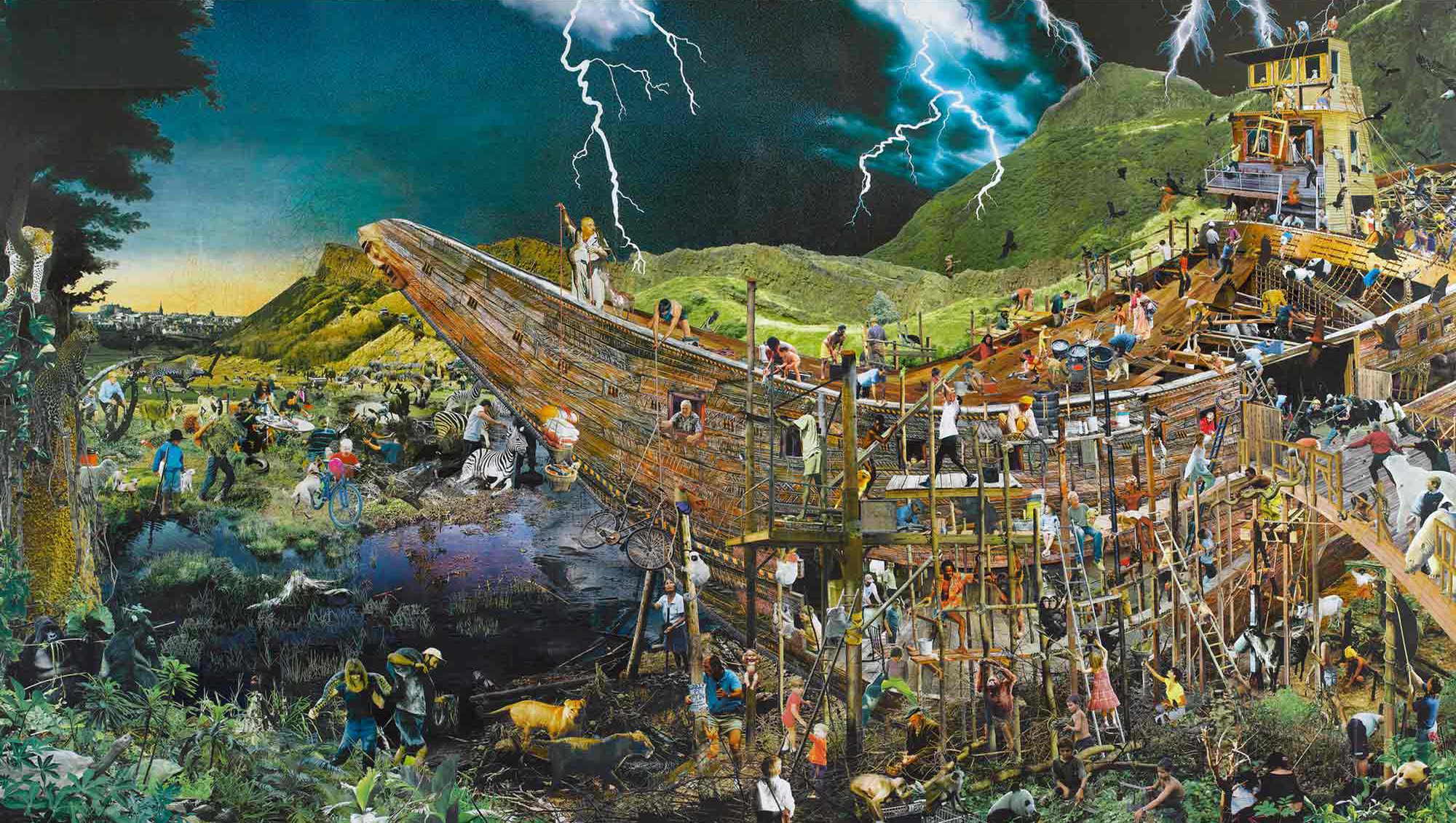As published in the current issue of Art & Christianity (No.70, Summer 2012, p.16):
Bristol City Council has recently commissioned two contemporary art works for St Bede’s Catholic College and St Bernadette’s Catholic Secondary School. Respectively, Transpire by Elpida Hadzi-Vasileva and Intersection by Michael Pinsky (both 2011), have transformed two public spaces where the footfall of staff and students enact the threading and crossing of ideas that created these pieces. From the outset, these art works were created alongside major building projects for the schools, as part of the Building Schools for the Future programme – indeed, they were a conditional part of these projects. As such, the integrated nature of the results speaks for the depth of encounter and consideration given to the commissions.
Elpida Hadzi-Vasileva’s piece, Transpire, is an installation of winding, stretching tree branches/roots which spill across the stairwell linking St Bede’s art and technology faculties. Traditionally-applied stucco and gold-leaf form a tracery along the walls and ceiling, with etched detail continuing the pattern across two windows. The windows, in fact, seem to be the site of the source of this spreading energy: a site of in-between, where the idea of the liminal space offers a particular resonance for the concepts of the work. The artist has identified the piece as representing ‘a search for something deep within us’, where ‘what lies beneath reflects above’ (the subtitle for the work); the Vice Principal Patrick McDermott has reflected on the course of knowledge passing from inside to outside and vice-versa.
What could remain as something of a Gnostic homage becomes richer for the setting of the school itself as a place of faith – it is as a tree of life, with its organic, tangled lattice and gleaming veins of flowing sap that the work is enlivened. Here is the acknowledged reference to St Bede’s interest in the natural world and to the biblical idea of a tree (or vine) that represents lineage and rootedness in God. Here too is the reference in the materials used to the highly decorated interior facades of Byzantine churches, where preciousness (both in the care taken and in the monetary value) is a fitting acknowledgement of the sacred.
In this regard, it is revealing that the commissions were organised by Art and Sacred Places, who seek to connect artists and their work with places of worship or similar sites. The commissioning process necessarily entails interaction and discussion as to the matching of ideas, faiths and hopes. For both schools, this was a lengthy process, taking several months alongside the inevitable questions about material suitability and safety. It might be a pertinent question to ask how successfully the sacred emerges from such conversations, there being a danger perhaps of dilution-by-democracy. Happily, it is to the credit of the contributing decision-makers that here the resulting art works embody something of a map of faith.
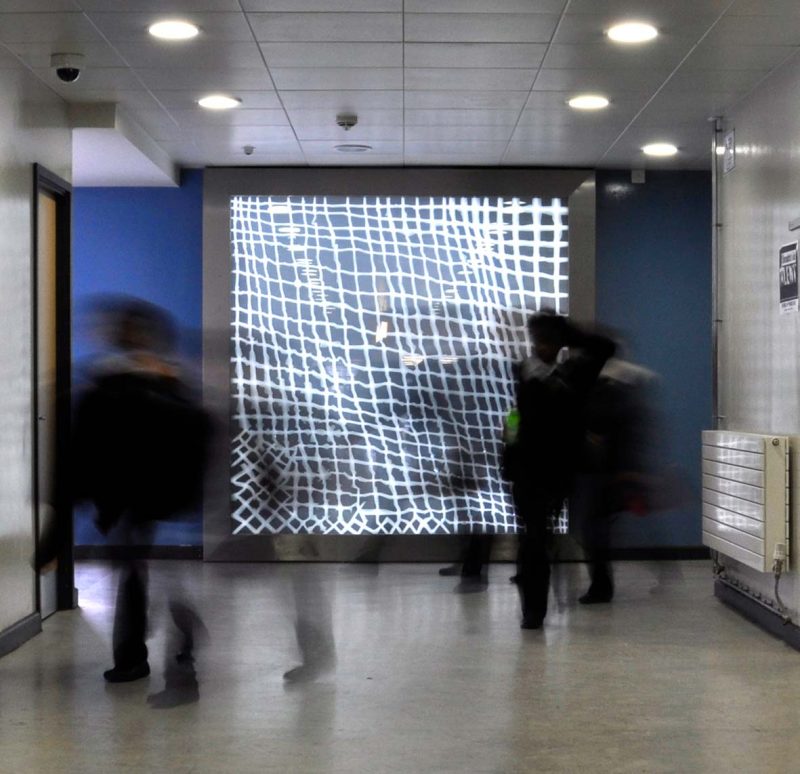
With Michael Pinsky’s work Intersection, this seems both the implied and the literal result of the commission. A pulsating, illuminated grid appears to glow at one end of the main school passageway, alternating between a negative and positive image. It is a composite image featuring the digitally-transcribed hand-drawn crosses of all 750 pupils at the school, whose individual post-it-sized drawings have been incorporated into one larger pattern. Formed from glass layers within a steel frame, the LEDs which contour the pattern create the rhythm of a light-house’s sweeping beam – a rhythm markedly different from the school bell – where the measure of place and situation is slowed and deepened.
Intersection works by opening up routes for the sacred. It makes sense both of an individual’s singular description of a cross, and of the interconnectedness which such descriptions suggest for a whole community. It is also a sign for a literal journey of faith through secondary education. More than the simple use of an abstracted symbol, it prompts the static form to become spiritually meaningful in its (and because of its) context. Like Hadzi-Vasileva’s work, it brings dynamism to the appropriation of religious symbol, neither sealing it tightly with doctrinal declaration nor allowing it to disintegrate in irony, cynicism or pluralism.
Perhaps this is a strength of the particularly conceptual approach of both artists. In numerous successful exhibitions, internationally as well as locally, both Pinsky and Hadzi-Vasileva have produced work which facilitates other people’s worldviews – from the green cross understood to signify religious divide in Mas d’azil, France to the tree as representative of our living systems in the New Forest. In the schools, to the surprise of the management groups, concepts can and have become the malleable carriers of meaning through a style of art that is not readily celebrated by such institutions. While this may still seem to be a ‘strange place of religion in contemporary art’, it nevertheless champions the sacred in deeper and richer forms.
Photographs by Sheona Beaumont
www.michaelpinsky.com
www.elpihv.co.uk
Header image: Transpire, 2011, by Elpida Hadzi-Vasileva. Photograph by Sheona Beaumont.
